Abstract
In high decerebrate unanaesthetized cats (pre-collicular/pre-mamillary) which developed spontaneous co-ordinated locomotor activity, ventilation, breathing pattern, phrenic nerve, external and internal intercostal electromyogram (e.m.g.) activities were examined. Locomotion was also induced by electrical stimulation of the subthalamic locomotor region and in a few cases the mesencephalic locomotor region. Quadriceps muscle e.m.g. was used to monitor locomotor activity. Spontaneous locomotor activity was associated with an immediate increase in ventilation and shift of the ventilatory CO2 response curve to the left. Tidal volume was smaller and respiratory rate larger at any given level of ventilation during spontaneous locomotion. Increases in respiratory rate were due to reductions in both inspiratory and expiratory duration. Upon cessation of locomotion, these changes abruptly returned to control values. Within the first one or two walking steps of spontaneous locomotor activity, the rate of rise of phrenic activity increased slightly while peak phrenic activity remained relatively constant; peak internal intercostal activity increased markedly while peak external intercostal activity decreased. Similar changes in ventilation, phrenic, external and internal intercostal activities were observed in association with locomotion induced by stimulation within the subthalamic or mesencephalic locomotor regions. In contrast to spontaneous locomotor activity, however, increases in both external and internal intercostal activities were often observed. Peak amplitudes of both external and internal intercostal activities increased linearly with increasing levels of end-tidal PCO2 during rest and during locomotion. However, at any given level of PCO2 peak external intercostal activity was smaller and peak internal intercostal activity larger during locomotion than at rest. With increasing peak quadriceps e.m.g. activity at a constant walking rate, external intercostal activity was progressively inhibited while internal intercostal activity was progressively enhanced. No consistent change in peak phrenic activity was observed with changes in peak quadriceps activity. With increasing walking rate at a constant peak quadriceps e.m.g., peak phrenic and peak internal intercostal activities progressively increased and peak amplitude of external intercostal activity (which was inhibited below the activity observed at rest) also progressively increased. The virtually simultaneous changes in quadriceps activity and respiratory motor activities suggest that the increase in ventilation at exercise onset is neurally mediated. Furthermore, these results suggest that the motor pathways to both the spinal locomotor pattern generators and the pattern-controlling mechanisms for respiration are driven in parallel to provide a quantitative relationship between respiratory motor output and locomotor activity. The functional significance of the alterations in respiratory pattern and participation of the different respiratory muscles is discussed.
Full text
PDF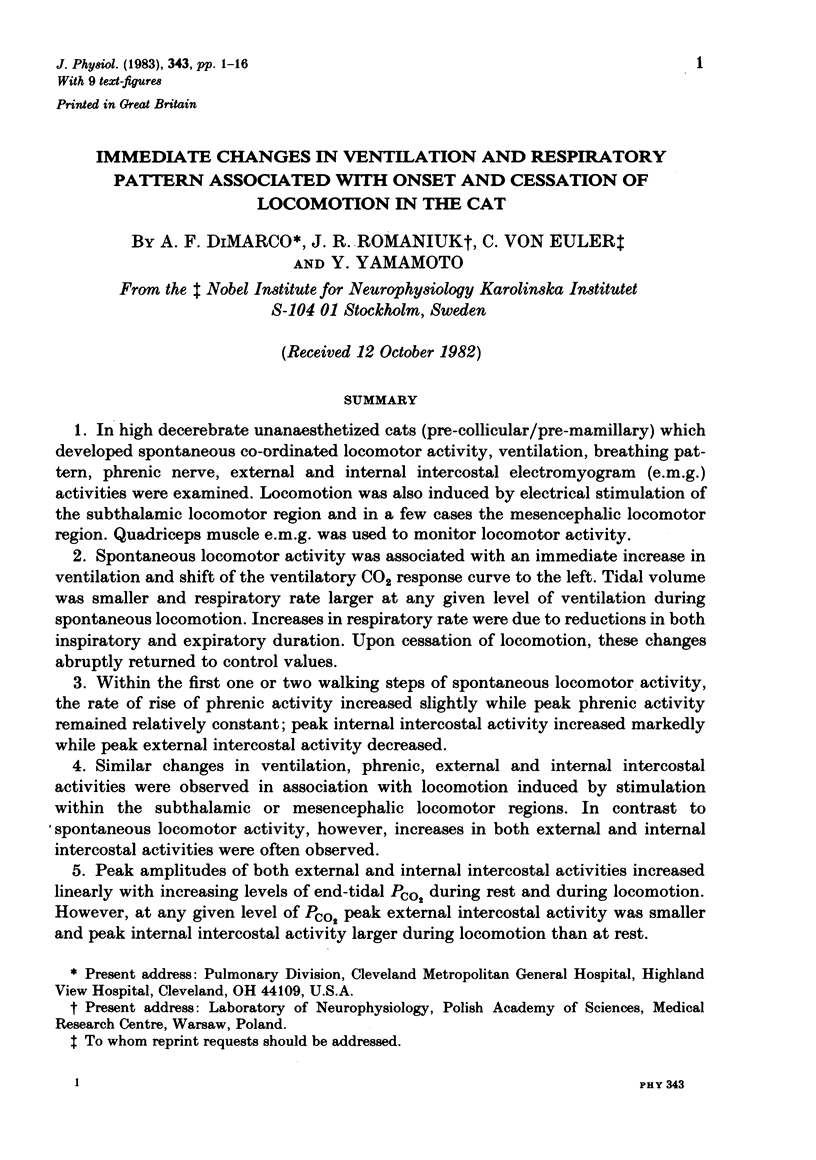

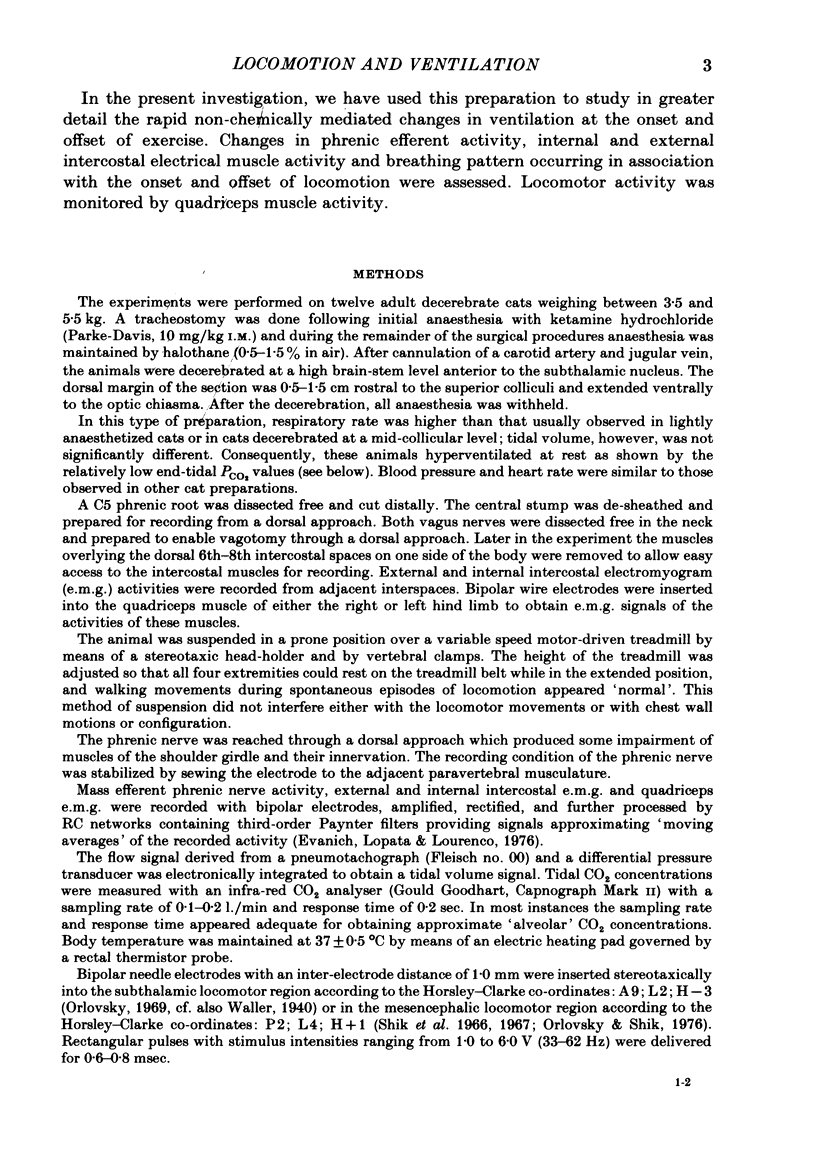
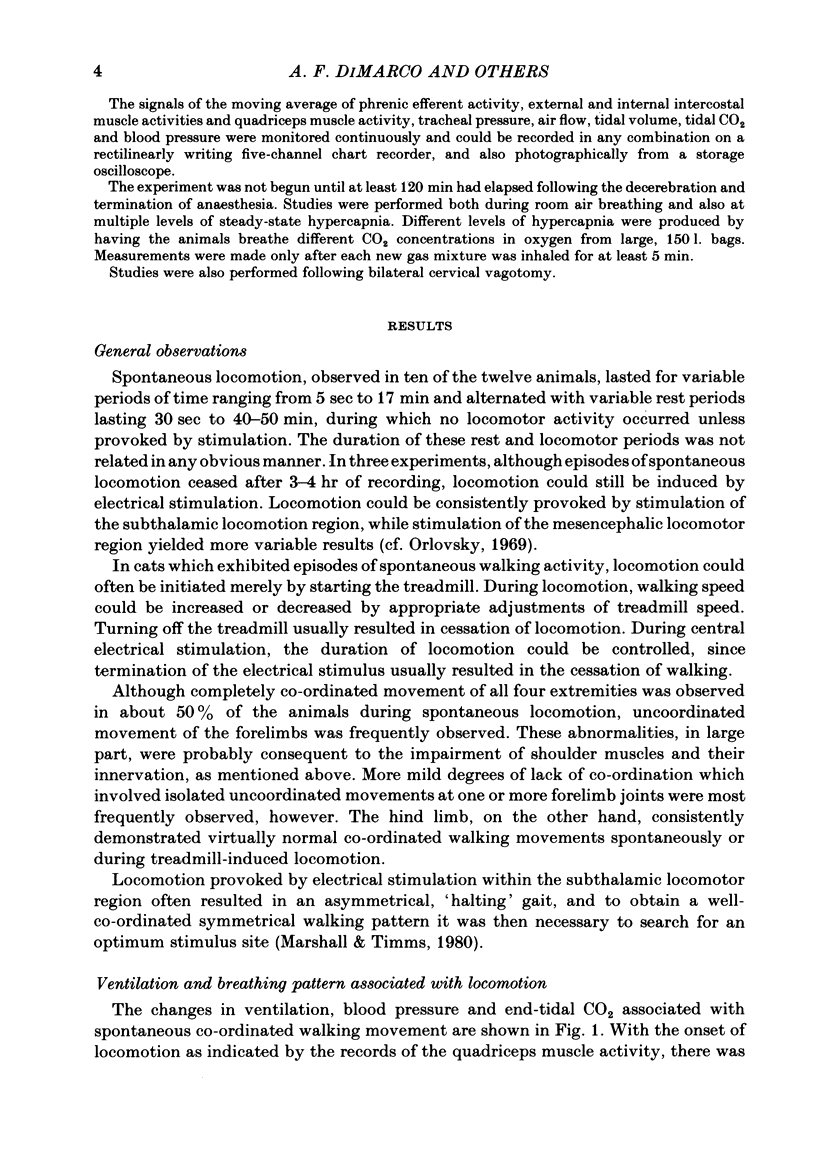
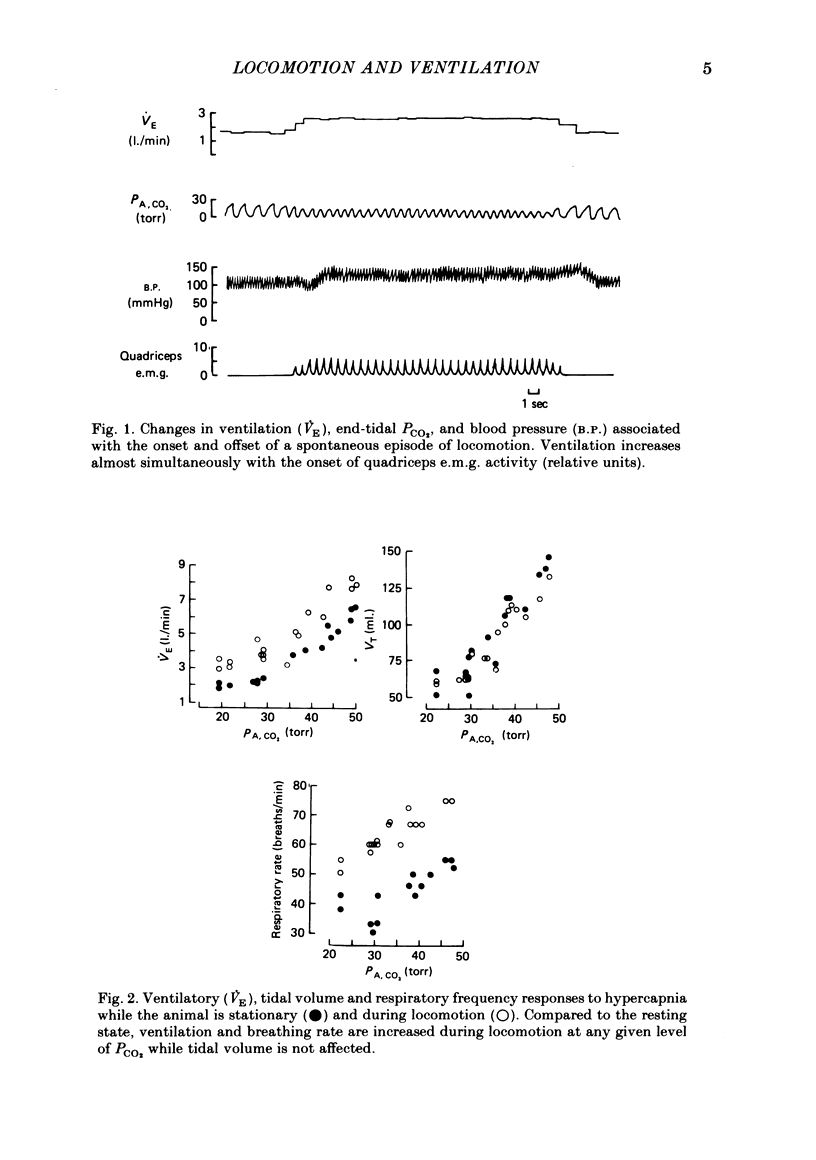
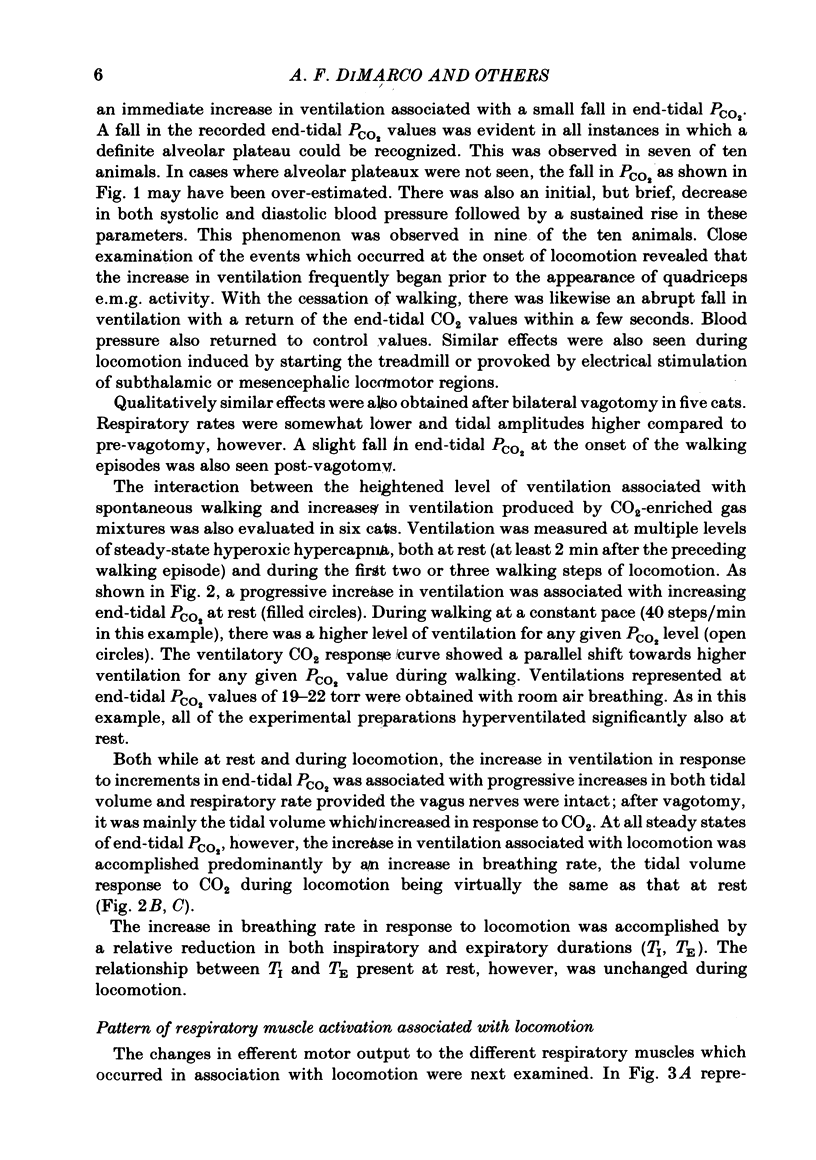
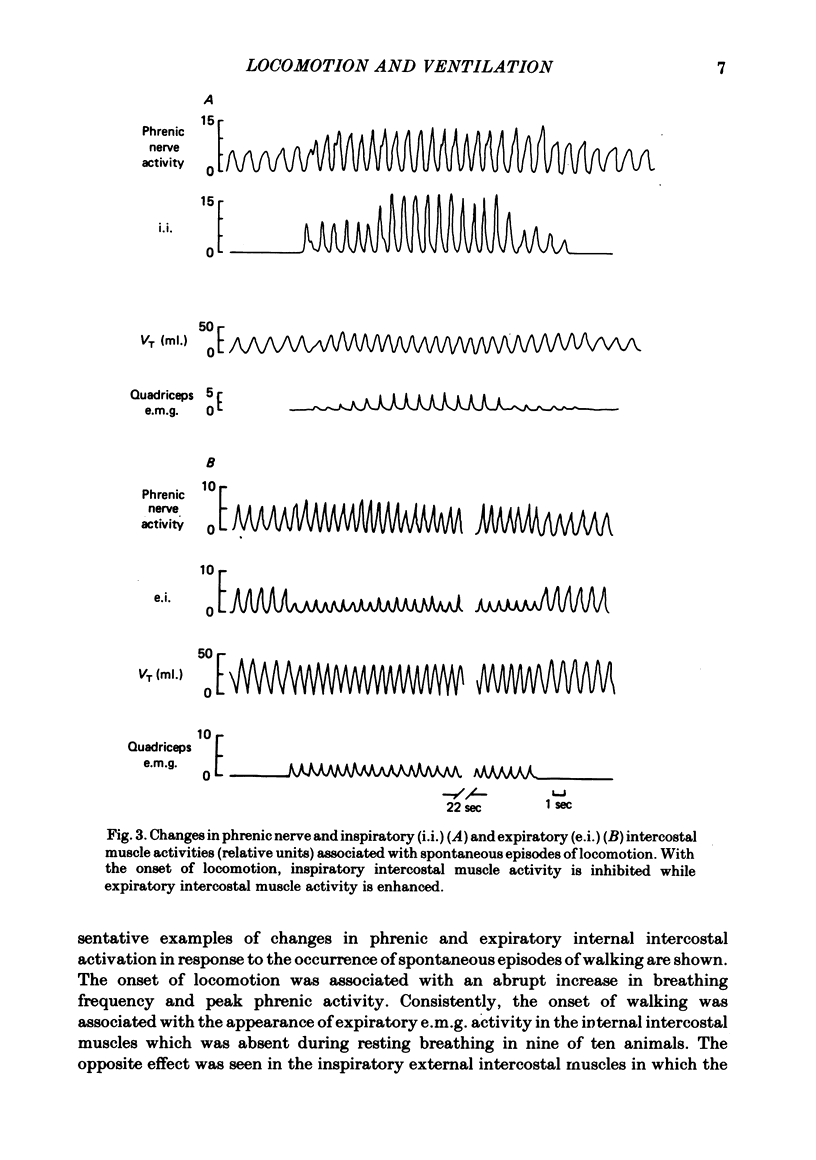
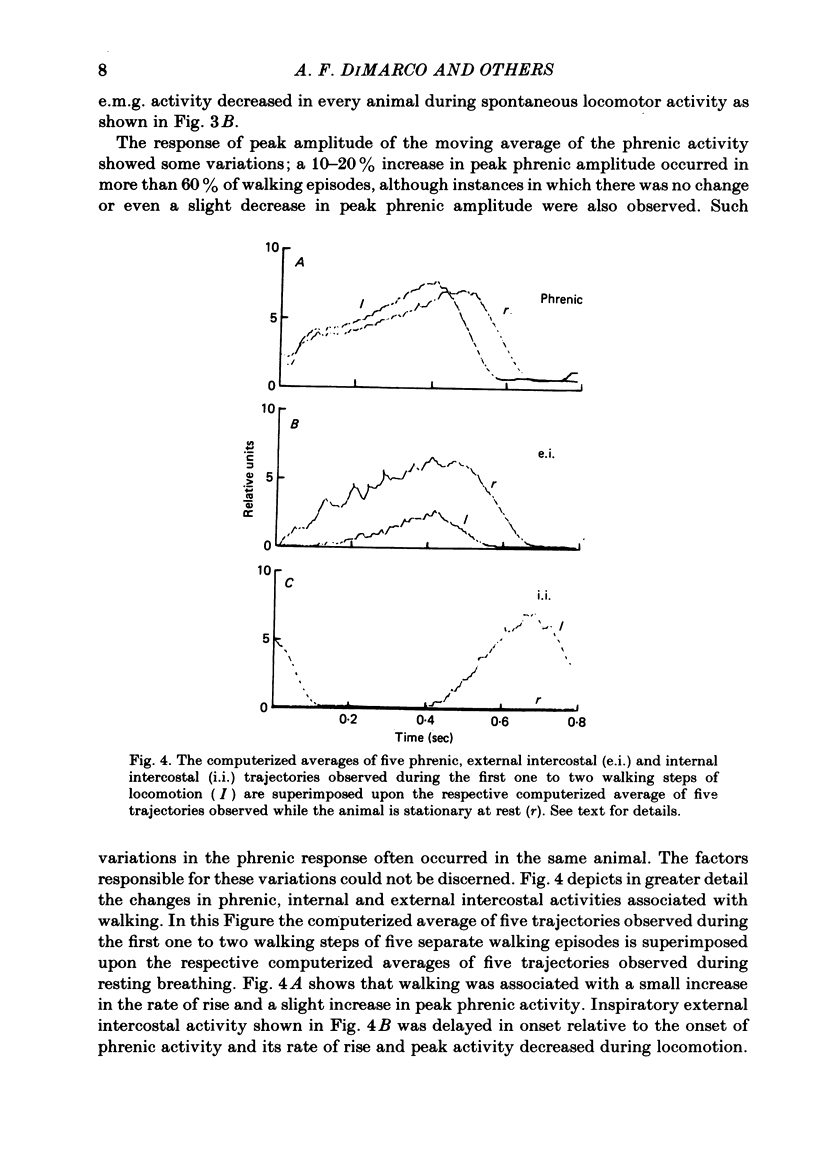
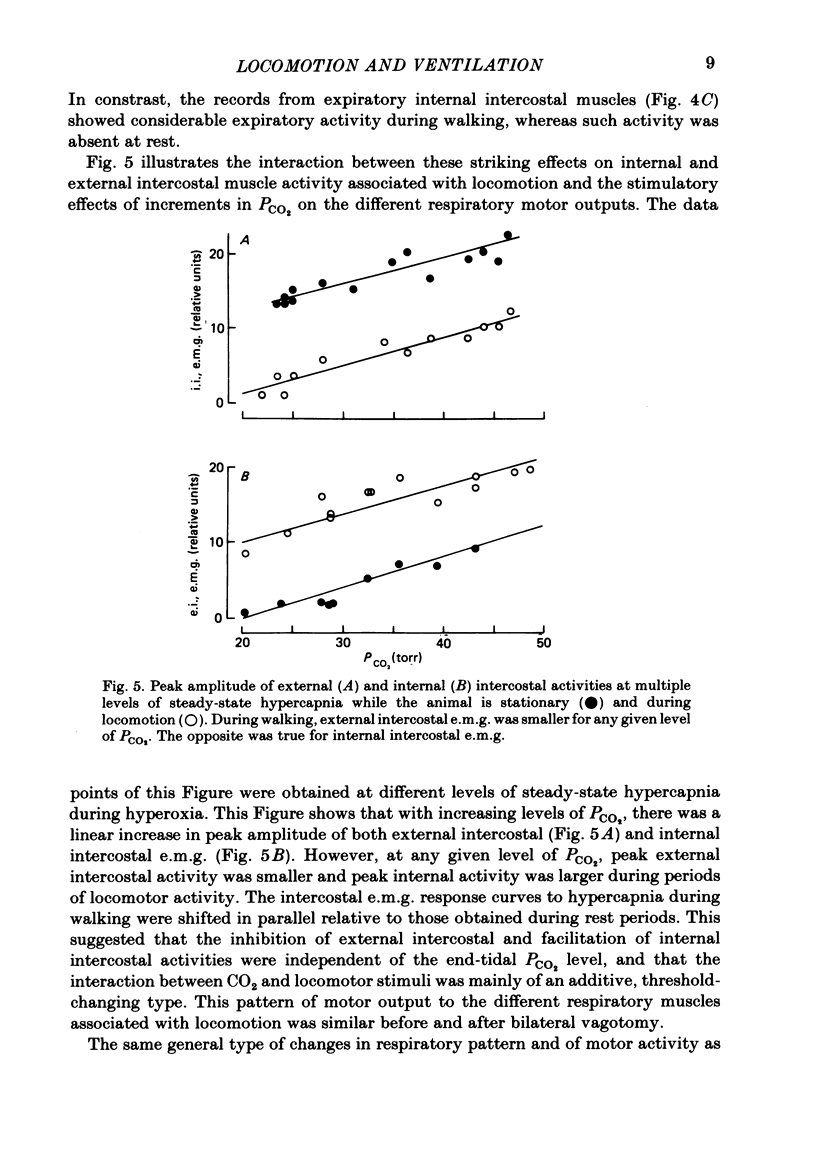
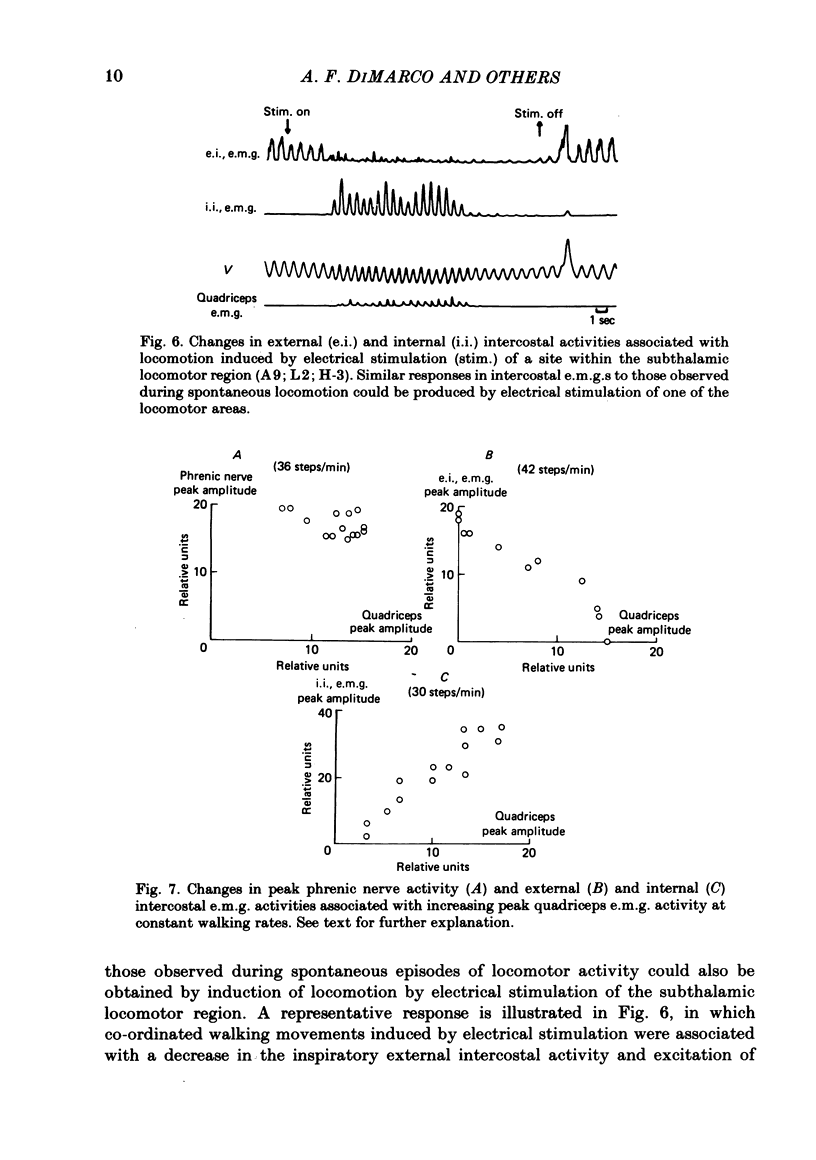
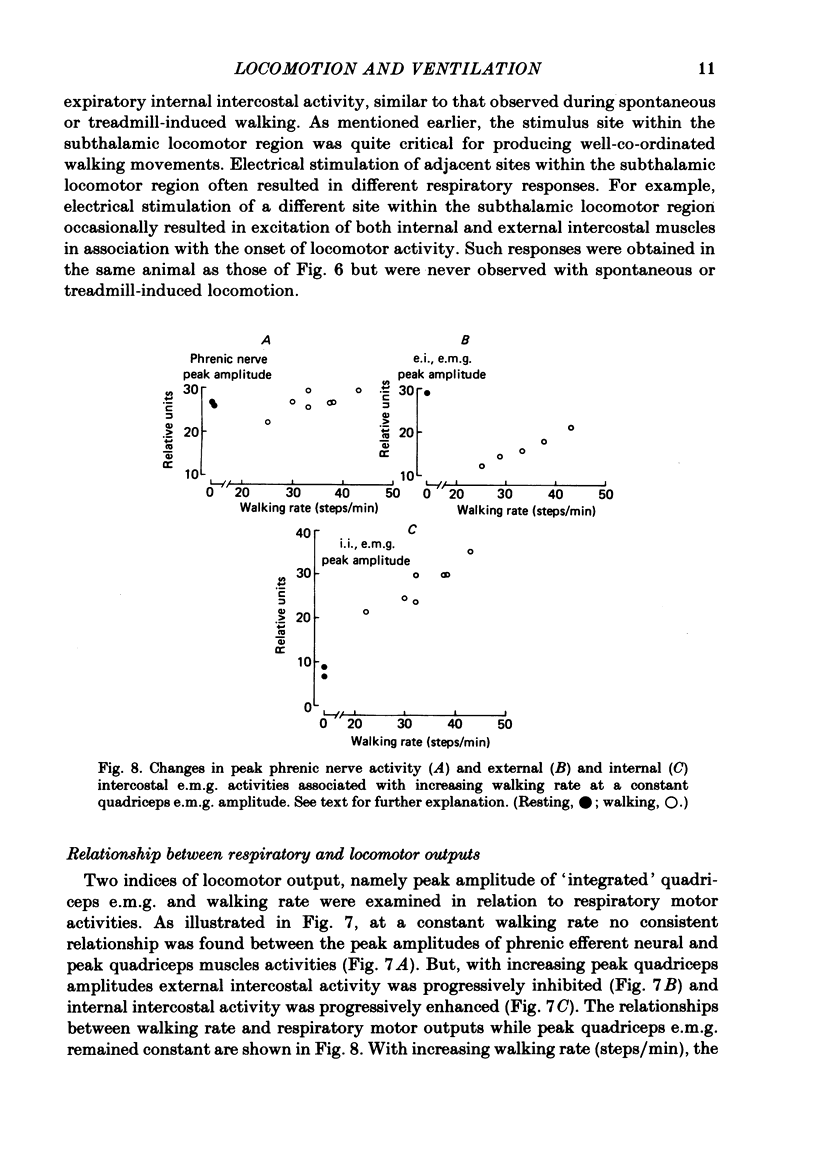
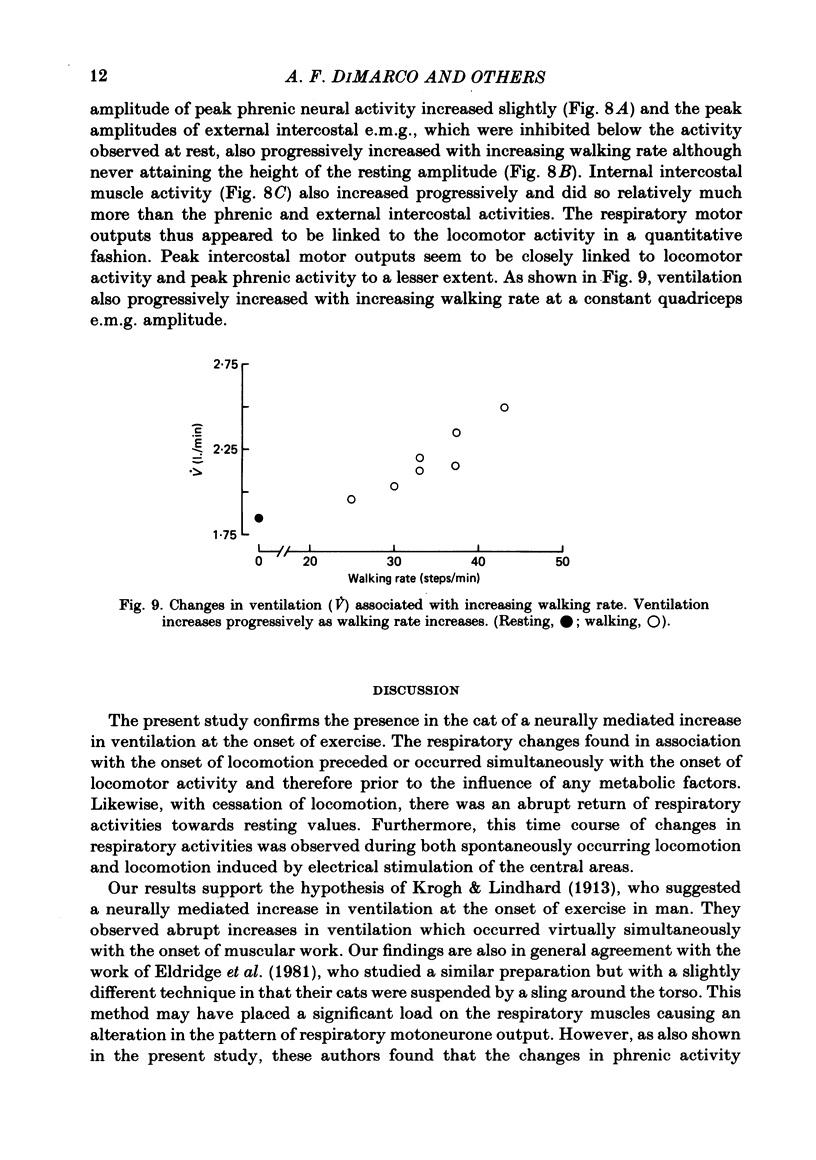
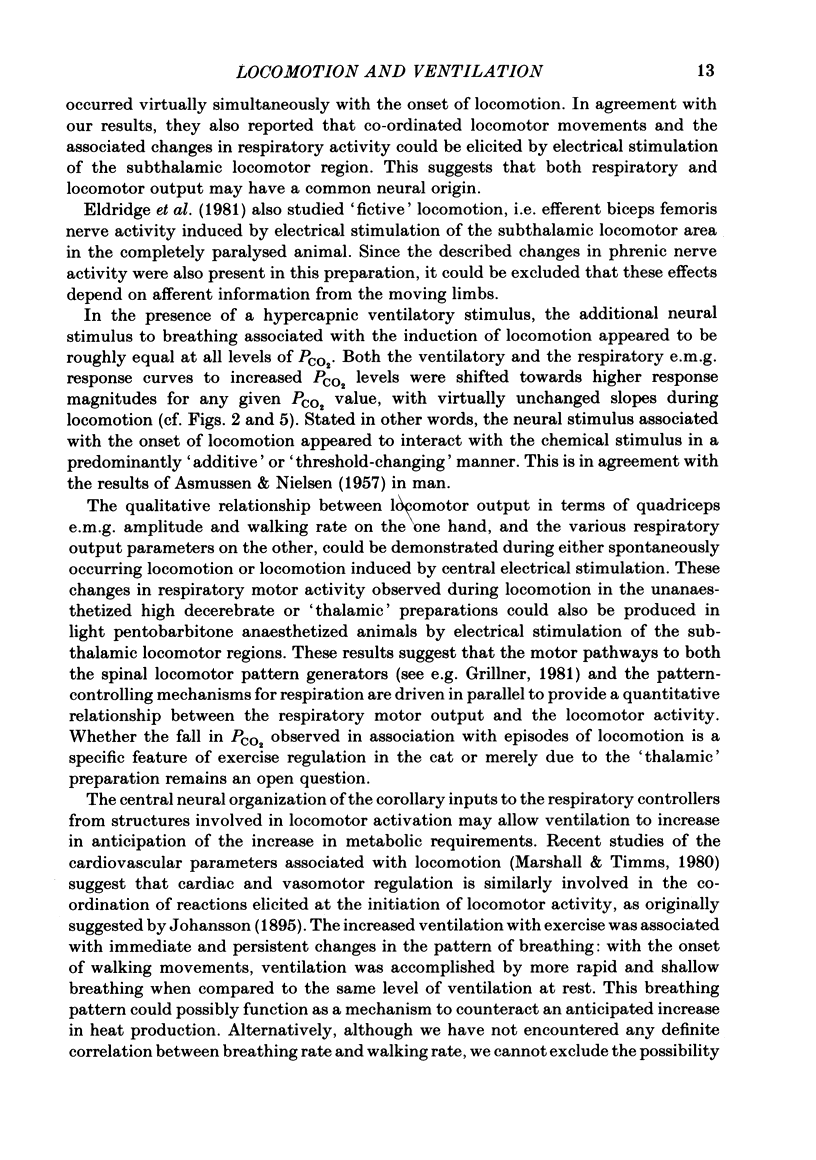
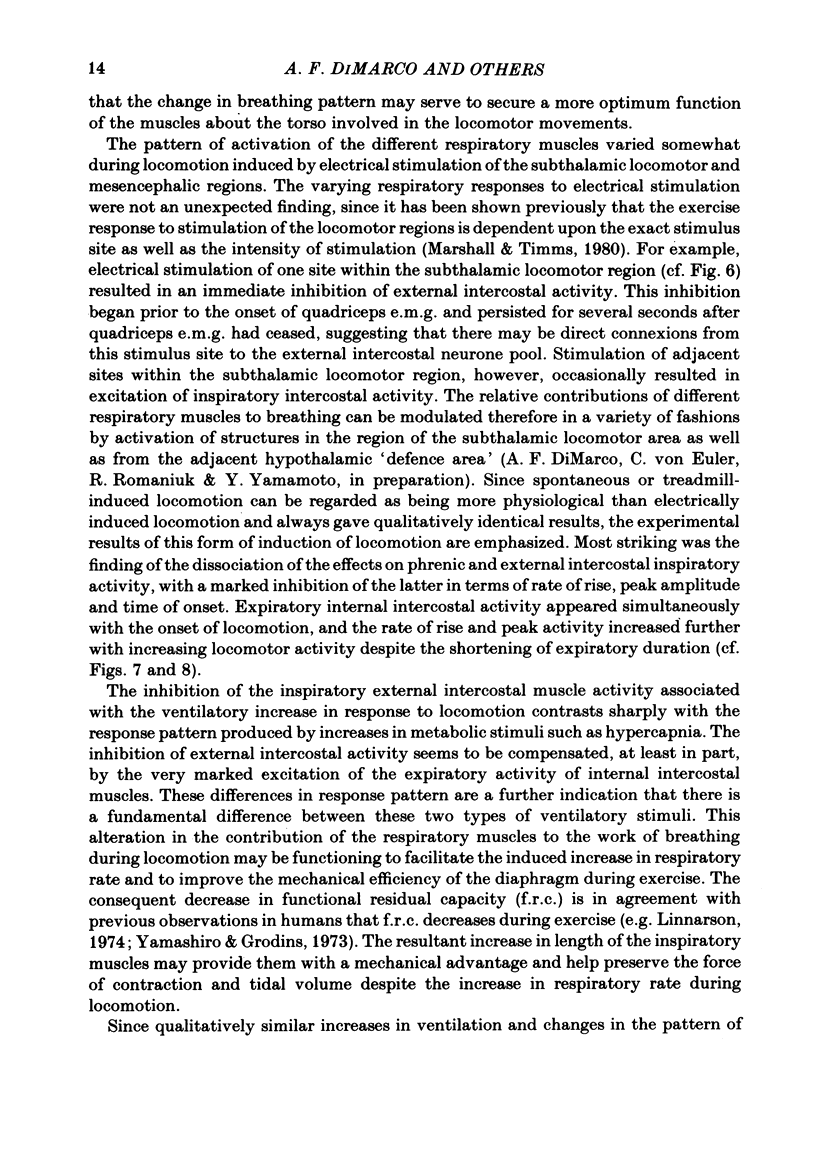
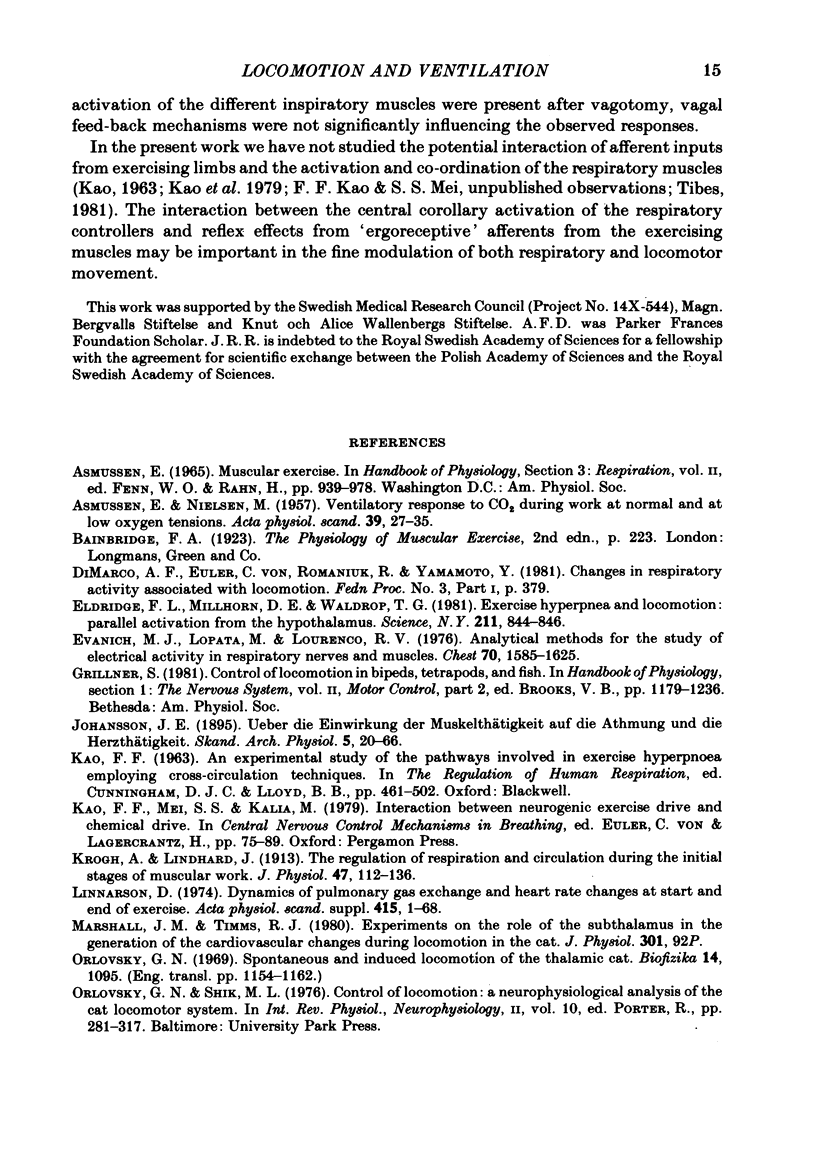
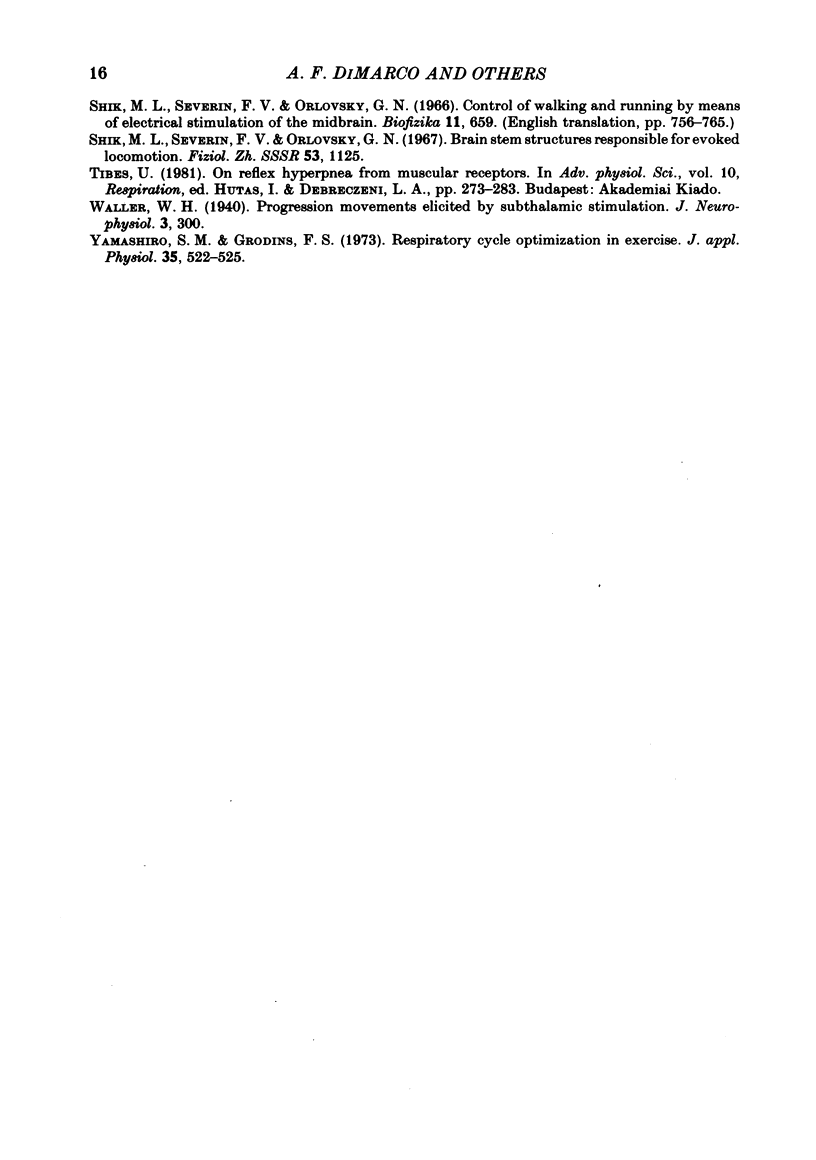
Selected References
These references are in PubMed. This may not be the complete list of references from this article.
- ASMUSSEN E., NIELSEN M. Ventilatory response to CO2 during work at normal and at low oxygen tensions. Acta Physiol Scand. 1957 Apr 10;39(1):27–35. doi: 10.1111/j.1748-1716.1957.tb01406.x. [DOI] [PubMed] [Google Scholar]
- Eldridge F. L., Millhorn D. E., Waldrop T. G. Exercise hyperpnea and locomotion: parallel activation from the hypothalamus. Science. 1981 Feb 20;211(4484):844–846. doi: 10.1126/science.7466362. [DOI] [PubMed] [Google Scholar]
- Krogh A., Lindhard J. The regulation of respiration and circulation during the initial stages of muscular work. J Physiol. 1913 Oct 17;47(1-2):112–136. doi: 10.1113/jphysiol.1913.sp001616. [DOI] [PMC free article] [PubMed] [Google Scholar]
- Shik M. L., Severin F. V., Orlovskii G. N. Struktury mozgovogo stvola, otvetstvennye za vyzvannuiu lokomotsiiu. Fiziol Zh SSSR Im I M Sechenova. 1967 Sep;53(9):1125–1132. [PubMed] [Google Scholar]
- Shik M. L., Severin F. V., Orlovskii G. N. Upravlenie khod'boi i begom posredstvom elektricheskoi stimulatsii srednego mozga. Biofizika. 1966;11(4):659–666. [PubMed] [Google Scholar]
- Yamashiro S. M., Grodins F. S. Respiratory cycle optimization in exercise. J Appl Physiol. 1973 Oct;35(4):522–525. doi: 10.1152/jappl.1973.35.4.522. [DOI] [PubMed] [Google Scholar]


